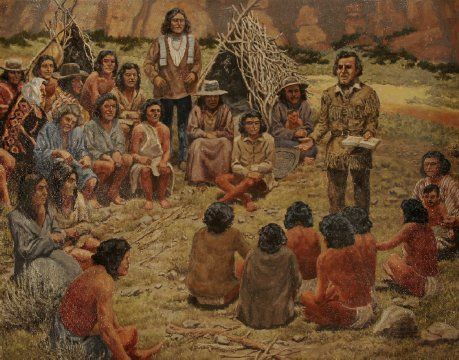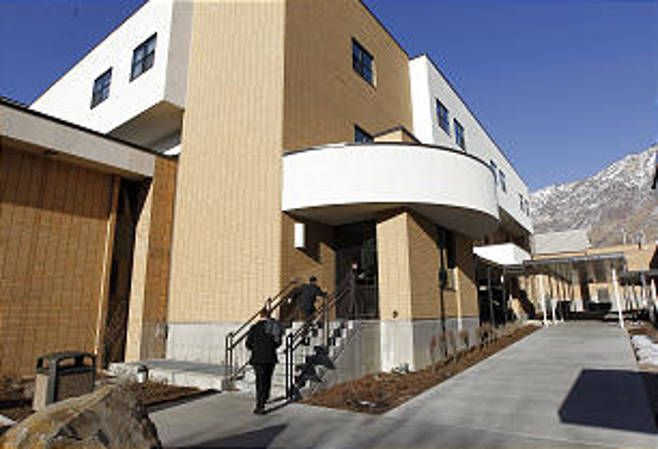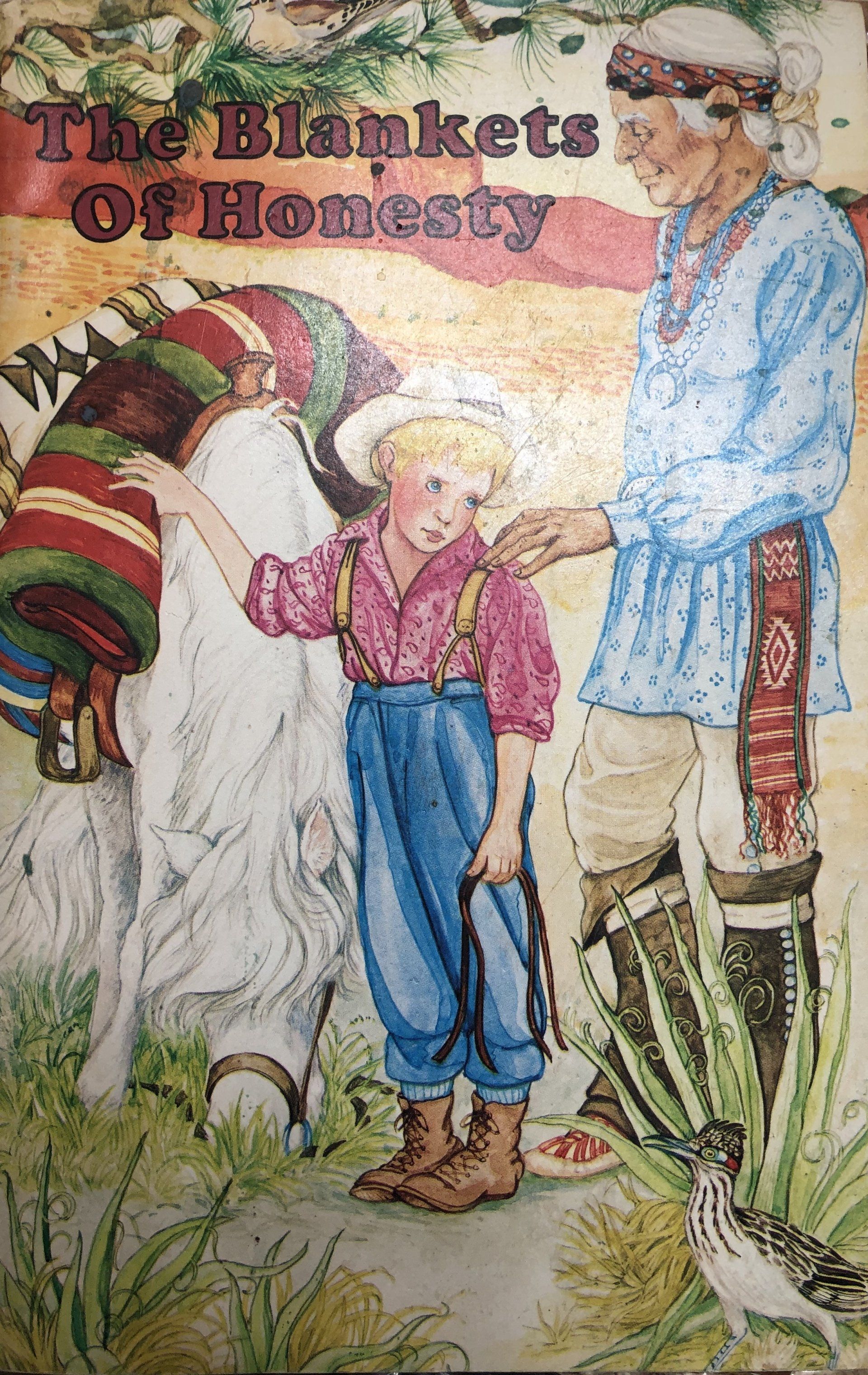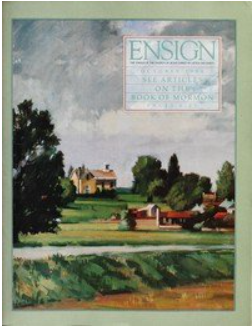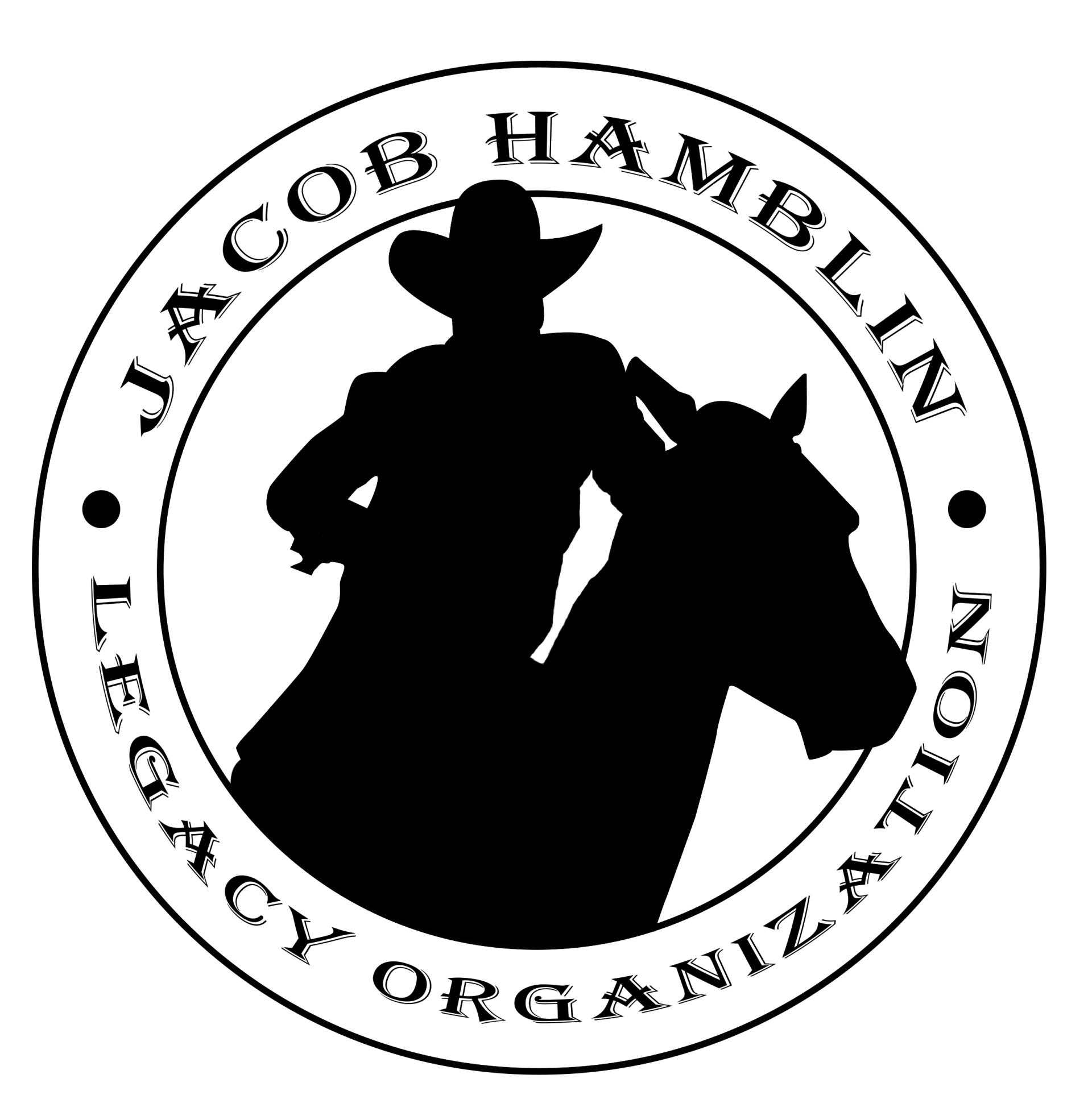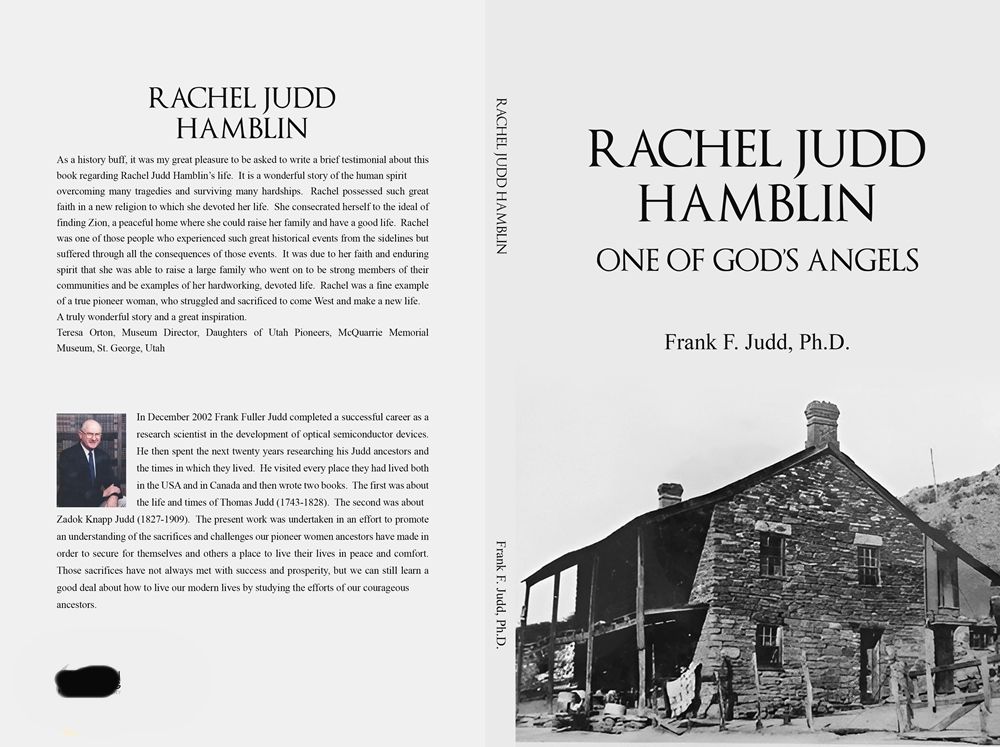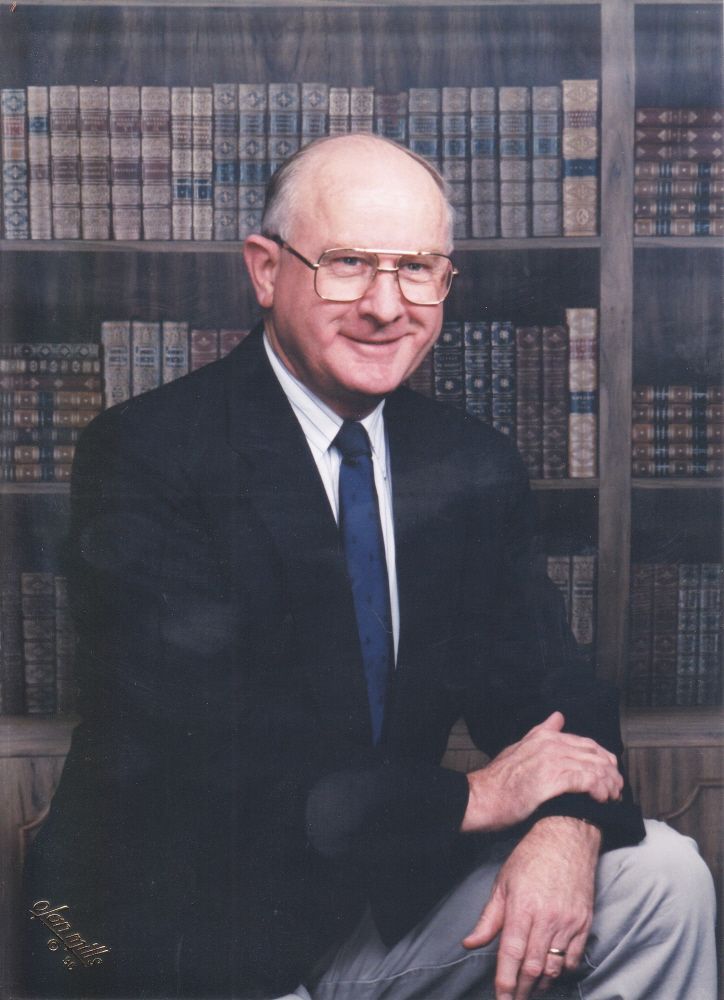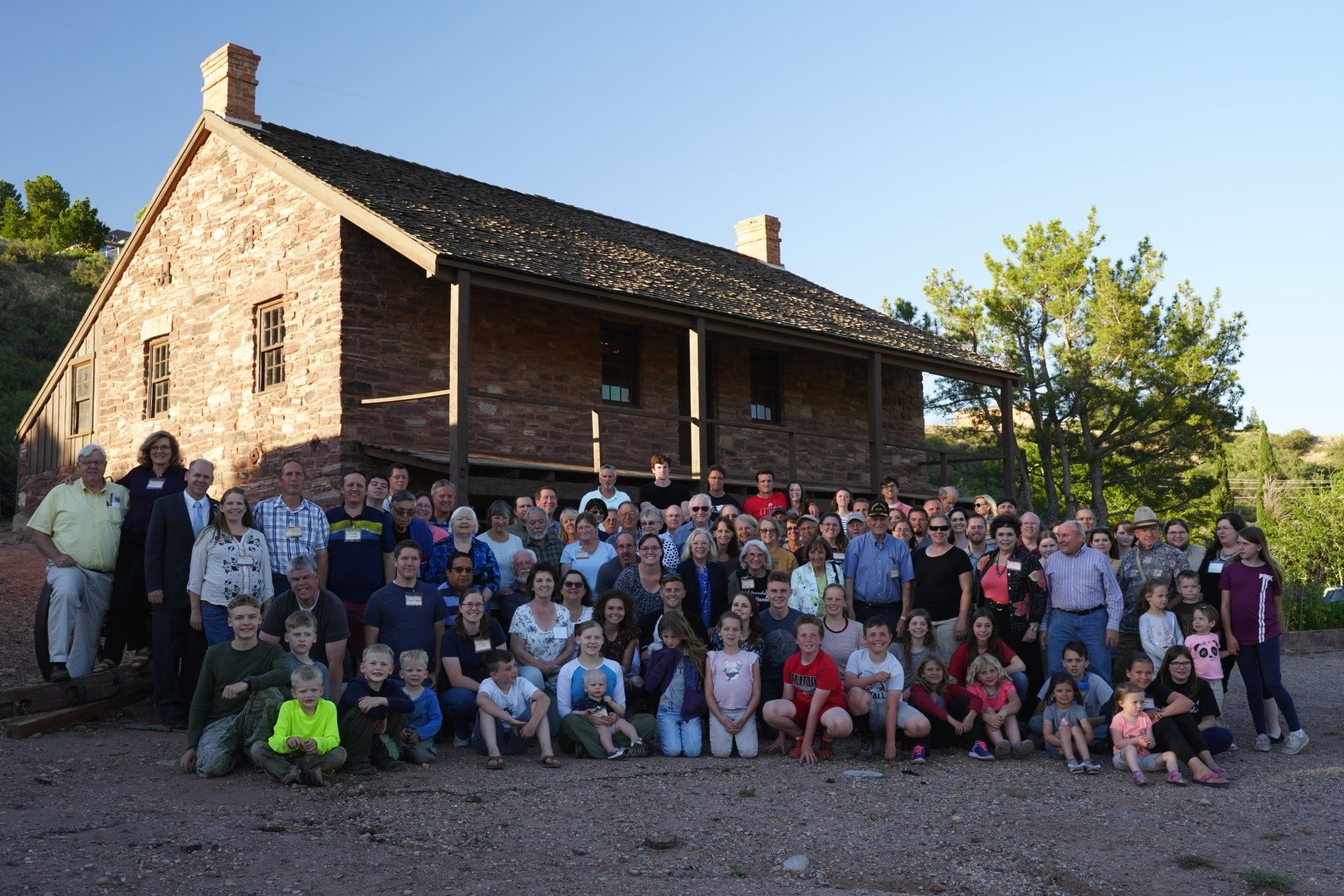Mark Elbert Hamblin
Donated by Joan Hamblin
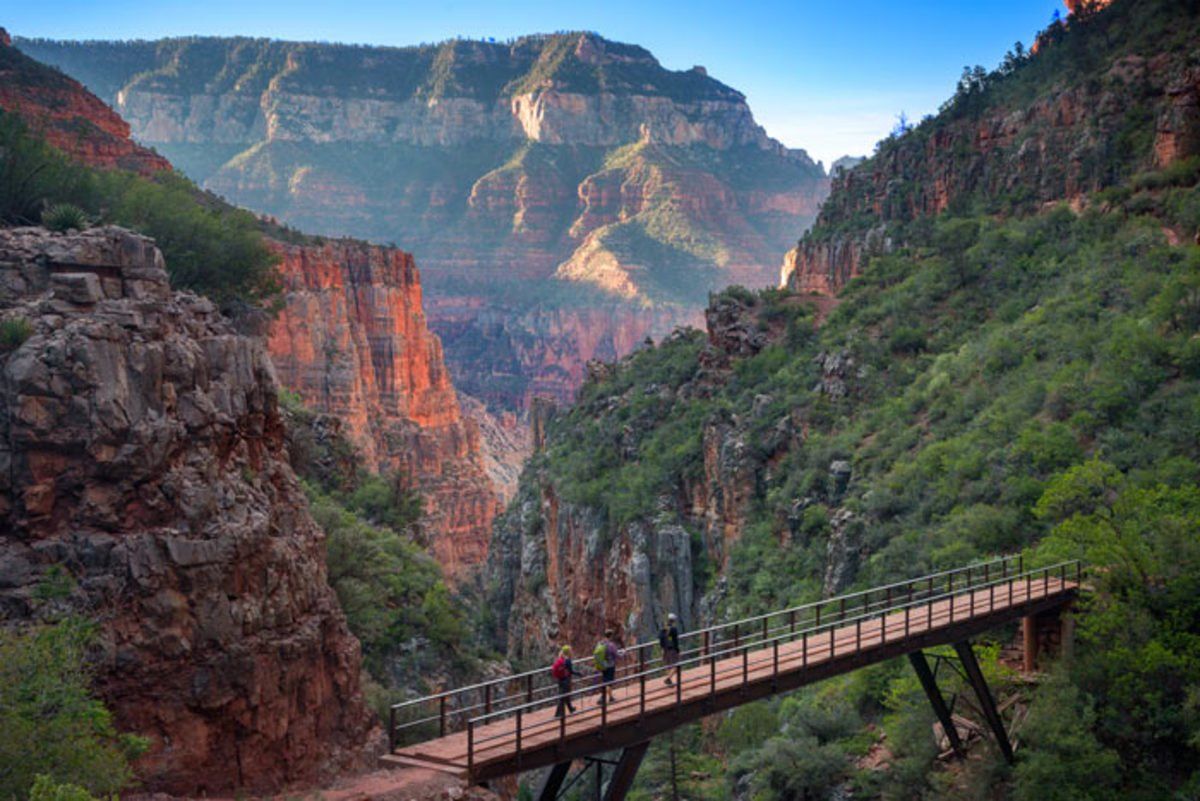
Mark Elbert Hamblin
March 14, 1907 – September 20, 1963
Mark Elbert Hamblin was born in Eagar, Arizona, on March 14, 1907, the son of Jacob and Sadie Hamblin. He was the 12th child of 14 children born to Jacob and Sadie. He had six older brothers and two older sisters. He later had two younger sisters. When he was just a little boy, his brother, Carl Maeser, got scarlet fever and went blind and deaf and finally died after Heavenly Father assured his mother that it would be best if he died.
The family moved to St. Johns when Mark was five years old. There he attended grade school and graduated from high school. He later attended the Gila Academy in Thatcher, Arizona and the Lambson Business College in Phoenix.
I only knew Elbert from what Mom and Dad told me about him and that wasn’t very much. As I was growing up, for a number of years we would get a package from Alaska at Christmas time from Uncle Elbert. It was usually smoked salmon which I loved. I learned later that he returned to Arizona about 1960 and married again and in 1965, he died. I was really quite taken with the story he told of his life in Alaska and I think it is one that everyone should hear. It is tragic, but inspiring.
When Elbert was 19 years old (1926) he married Maree Berry. They had four children: Joyce Cooper, Jeanie Larson, Markay Hamblin and Lei Lani Silvers. He loved them very much and was very proud of them.
Uncle Elbert and his family filled a two-year mission in the Hawaiian Islands in the late 1920s. He later went to George Washington Law School and graduated in 1937/ He was admitted to the Arizona State Bar in 1938. His father died in 1939 and his mother in 1940 and soon after that he left Arizona and went to Alaska where he spent 20 years of dramatic and adventurous living in a land he loved so much. Why he left his family, I personally do not know. From what I have been able to figure out, he had some very serious family problems that caused him to leave. I don’t know exactly what they were.
The ruggedness, the glamour, and the great drama of life going on in Alaska had a great influence on him. He left his loved ones, his friends, and all the people that he knew, and went to the country of the far north. It was a new life in a strange, beautiful, rough land.
Southwestern Alaska is a land of breath-taking beauty, a land of many beautiful lakes, beautiful waterfalls, and swift dangerous rivers. It is a land of majestic mountains, covered with eternal snows and many glaciers, a land of million so f beautiful trees and millions of beautiful birds. It is a fisherman’s paradise, a hunter’s dream, a land where the beauty of God’s handiwork is ever present. It is also a land that is rough, where danger and death are always near.
Elbert started traveling with two other young men, one from Wrangell, Alaska and the other from Ketchekan, Alaska. The latter owned a 32-foot fishing boat that they used to go from island to island and from village to village. They lived a life, for a few months, that all men dream of but few experience. They spent their time hunting, fishing and exploring. When they needed food for themselves or fuel for the boat, they stopped and worked for a few days then went on to another beautiful island, cove or inlet, any place that looked dangerous or exciting.
Time was running out for these three young men’s adventures however; it looked as though the United States would be drawn into the war against Germany. Hitler’s armies were running over Europe and soon would soon conquer all of Europe and Asia if not stopped. So thee three men parted company, each going his own way, never to see or hear from each other again.
Elbert went farther north to Seward, Alaska and from there on north to Anchorage. Upon arriving in Anchorage, he found himself without money or a job. However, jobs were plentiful as were credit and money. The most difficult thing was to find a place to sleep. Elbert finally found such a place. He and 46 other men slept in a basement with one side unfinished. It was December and the weather was cold and a considerable amount of snow would blow in on the cots. Within a couple of weeks, Uncle Elbert found a good job and a couple of weeks later, a warm, clean room with cooking privileges.
Life for Uncle Elbert during the next five years was rather exciting, violent and wasted. He got up in the turmoil of the war and wild, rough element that had drifted to Alaska, avoiding the draft. As he said, he was well on the road to destruction. Alcohol was more plentiful that food and so were the heartaches and tears than clean living and progress toward God.
Yes, five years of hard work and thousands of dollars found him in the kingdom of Lucifer, commonly called Hell. He had managed some of the best grocery stores in Anchorage at that time. He had bought and sold a home or two, made thousands of dollars, been in and out of the army, and at the end of the five years, he found himself broke and a pitiful slave to alcohol and tobacco. He knew that he could never return to his family or loved ones, not even to anyone who had known him in his youth. He also knew that he had to leave Anchorage and his friends he had there and go where he could get out into the hills and creeks, away from alcohol before he could regain his health and willpower.
Uncle Elbert said, “My dear brothers and sisters, never sneer at the man who is down, unless you have felt the blow that caused his fall, or felt the shame that only the fallen know because if the load he bears was placed on your back it might cause you to falter too.”
Uncle Elbert decided to go prospecting for gold. He also found his gold. In the fall, he returned to a small village nearer to the creek where his claims were. In this village, during the long winter months, he cut wood, trapped a little, helped the man who owned the trading post, and drank whiskey. Come spring, back to the creeks he went seeking and panning for his gold, until fall, so that he could return to his village and the long winter months of doing odd jobs and drinking whiskey with his alcoholic friends.
The next five years went by in the same alcoholic haze the first five had gone. He defended himself many times in bitter fighting, sometimes with knives, sometimes with guns, and sometimes with clubs, but mostly with his bare fists. It was always in the same condition, pitifully drunk, so drunk that he came through with only a few scars. Others drowned in the swift, cold rivers, a few froze to death, but more died directly from the effects of alcohol.
There were times in the winter when the temperature was down to 40 or 50 degrees below zero. At such times, Uncle Elbert contemplated putting on his snowshoes and just starting out across the great white stillness to walk until he was exhausted, then lie down and go to sleep. Within a short time, this earthly existence would be over and his tortured alcoholic body could rest. Uncle Elbert knew that he could never take his own life because he had been taught the consequences of such an act. He also knew that that would not be an easy way out.
In the early spring of 1951, as Uncle Elbert was walking along beside a river, it suddenly dawned on him that the birch trees had green leaves. He looked at the river and the ice was gone. He looked at the ground and the snow was gone. A great fear came over him. The reason was because just last night when he and some of his friends had started drinking, it had been cold, snow had blanketed the ground, ice had covered the rivers, and the trees had been stiff and dead, without a sign of leaves.
Uncle Elbert went back to the village and found that the start of “last night’s” drinking had been some three months ago. For three long months, he had been in a blackout. He been to parties, dances, been in fights, worked here and there and could not remember one single thing that had taken place. So the sad moment of truth had arrived and he knew beyond a shadow of a doubt that he was an hopeless alcoholic and tht without the help of God, he was destroyed. He knew that he should pray but felt so unworthy, useless and dirty, he was unable to do so. His bush pilot friend flew him back to the creeks and left him. In a few days, with good food, hard work, and no alcohol, he had regained a good share of his heath and the will to live.
One exceedingly clear June day, he was walking along a beautiful little creek, searching for a place to pan for gold. The great and beautiful Mt. McKinley towered above him in all its glory, a larger and more beautiful mountain you will nevr see. Uncle Elbert was walking along with a cigarette in his mouth, looking at this majestic mountain and thinking, “O, Father of Heaven and Earth, How Great Thou Art…” when a clear strong voice said, “Throw down that cigarette!” At first he thought that his imagination was playing tricks on him and he kept on walking. A little farther on, this same clear, strong voice, said, “I told you to throw down that cigarette, it is dragging you down!”
Uncle Elbert had known fear many times before in his life, but never had he known what real fear was until now. He thought to himself, “Now, boy, you have lost your mind.” The voice came right back saying, “No, you have not lost your mind. There is no easy way out for you. Do you know who I am?”
The fear was so great that he dared not look to the right or to the left but walked straight ahead.
The voice said, “I am your brother who died when you were a small child.” The voice went along with him for over a mile, telling him he must repent or he would be destroyed and be lost to his loved ones forever. Maeser was his dead brother who told him of the tears and the heartaches he was causing his loved ones in the spirit world. Maeser promised him that if he would repent and leave tobacco alone, in time he would overcome his desire for alcohol and his other bad habits.
After talking for about 30 minutes, Maeser said, “Now I must leave you, so promise that you will throw away your cigarettes and never smoke again.”
“Sure, sure, I promise,” was the answer, and the voice took its leave.
Within one hour Uncle Elbert was smoking as usual. He could not believe that what had happened to him was true. He was so sure that it was the effects of alcohol that he forgot his promise and right on with his pitiful, sad, sickening way of life.
Six months later, on
Christmas Eve, after he had returned from a dance in the village, for some
strange reason he was partially sober.
He had gone to bed and he noticed that it was a little after
midnight. So he said to himself, “I’ll
smoke my first cigarette on Christmas Day and then go to sleep. Then I’ll wake up in a few hours and go the
rounds of all my friends, having a few drinks with each of them.
As he lit his cigarette and lay back on
his pillow, he inhaled a big puff and thought how nice it was to go to a dance
and return home half sober. Even so, his
blood and body were saturated with alcohol.
Suddenly, that same clear, strong voice that he had heard six moths earlier, called him by name, saying, “Mark, you are a liar, aren’t you? You are a liar who is so weak that you cannot keep your word!”
When the fear had subsided enough, so that Uncle Elbert could think, his first question was, “Do I have another chance?”
The voice said, “Yes, you have another chance, but do not break your promise again.”
Uncle Elbert was then told that he was going to be given another chance because of his children. His loved ones in the spirit world told him that he would have been taken long before if it were not for his children. He was shown what his state would be if he did not repent. His fear was so great that he went into a state of shock.
The rest of the night he lay awake and the next morning, he took a gallon jug of water, an ax, and a cross-cut saw. He put on his snowshoes and went a little ways from the village and started to cut down trees and saw them into stove-wood length.
The first three days and nights he went through the tortures of hell. He would work a few minutes and that terrible desire for alcohol would take hold of him. His head ached, his eyes turned yellow, and his face was swollen and puffed. The sweat that poured from his body seemed to burn his flesh like fire. He would cut and saw until he was sure that death was near and then he would start toward town to get a few drinks to take away the torture. He never got far away from his work, however. He’d fall to his knees and try to pray. At first, he could only say, “Oh, God in Heaven” and then back to his sawing and cutting he’d go. Then he would drink water and become violently sick for a while. Again, he started towards town for a drink or two, but he fell to his knees and prayed again. Then back to cutting, then take a drink of water and become sick again. The first day, he could not ever hold any water on his stomach.
The second day was much like the first. By night, he could hold down a little soup but could eat nothing like solid food. The third day, he took a bottle of milk along with the jog of water. The milk would not stay down, but he knew he would live. All this time, he had a package of cigarettes in his pocket, but never put one to his lips. He could have gone to town at any time and had all the whiskey he could drink, but he has never drunk a drop of any type of liquor nor has he ever touched a cigarette to this day.
At the end of the third day, before returning to town, he took an inventory of himself. For three days, he had worked and sweated and cut enough wood to last one person through a day and a night, if they were careful. For three days, he had been unable to hold food on his stomach, but he felt like he could soon eat food and enjoy it. For three days, he had not touched a cigarette or a drop of liquor and most of the time, all he would say was, “Oh, God My Father.” But this night, he knew he had won his battle with liquor and tobacco. The sky and trees were never so beautiful, but he had a long way to go. For the next seven or eight weeks, he cut about 30 cords of wood and regained his health. Not only was this man’s life changed, but the whole village changed for the better. Everyone had been so sure that this man could not leave tobacco and liquor alone. Without realizing it, the old trappers and miners developed the desire to do better and to help their children to do better.
In the yeas to follow, Uncle Elbert sent his boy on a mission and put him through college. He also helped his daughter and their families. Within four years, he had bought an inn and had paid for it. The people who had owned the inn wanted to sell. They came to Uncle Elbert and asked him to go in with a friend of theirs and take the hotel off their hands.
They said, “We know you’re broke and we know how you have lived in the past. We have been watching your struggle the past weeks. We do not know what has caused you do this, but we believe you are honest, and if you will do this, we will not ask for a down payment. You just pay so much a month. You do not even need to sign the papers unless you wish to.”
As soon as the inn was paid for, the man owning the trading post came to Uncle Elbert and offered him the same deal on the trading post.
Soon he owned and operated the power and electric plant. Then he was the postmaster and had many other interests and holdings. Due to the influence and trust the people placed in him, he came to act as the unofficial law and order. The closest official law was in Anchorage, 200 miles away.
He was not active in the church there because there was not even a branch there. He served his fellowmen in sickness and in death. In time of death, he helped dig the grave, make the casket, prepare the body for burial and deliver the graveside sermon. He acted as their legal counselor, their trusted advisor. He never betrayed their trust.
Uncle Elbert finally decided to come back to the lower 48. and in the early 60s he came to Arizona. Soon after, he renewed some old friendships and married LaVel Whiting DeSpain and lived with her and her family and became a father to her children. Then after a short illness, he died September 20, 1963. I’m sure the many years of hard living finally caught up with him.
Uncle Elbert said he would always feel very humble, very thankful and yes, very unworthy when he kneels to pray to his Father.
Uncle Elbert then quoted the story of the old violin.
The Auctioneer picked up the old violin and held it with the bow. “What am I bid?” said the auctioneer in a voice that was soft and low. “One dollar, two dollars. Two dollars, who’ll make it three? Three dollars, three dollars once, three dollars twice, going, going…”
But , no. From the room far back, a gray-haired man came forward and picked up the bow. Brushing the dust from the old bow and tightening the loose strings, he played a meoldy pure and sweet, as sweet as the angel sings.
“One thousand dollars, two thousand, two thousand, who’ll make it three? Three thousand once, Three thousand twice, going, going and gone.”
The people cheered, but some of them cried. They could not quite understand the change of the worth. But quick came the reply, “The touch of the master’s hand.”
So it is in the ways of life, those who are scarred with sin are auctioned cheap to a thoughtless crowd much like the old violin.
A bowl of porridge, a game of cards, a drink, and he travels on. He’s going once, he’s going twice, he’s almost gone. Then the Master comes and the foolish crowd cannot quite understand. The worth of a soul and the change that’s wrought by the touch of the Master’s hand.
Help us Father of Heaven and Earth to love our fellowmen and always be willing to help those who need help. Blind us to the faults of others and reveal unto us our own is this man’s constant prayer.
***
This story of Uncle Elbert was copied and rewritten and edited by Ellis W. Hamblin, July 6, 1996 from his story collected by Uncle John Hamblin and given at Uncle Elbert’s funeral and taken from a talk given by Uncle Elbert for church telling about himself.
Jake remembers when Elbert was back in Arizona. He was working at a Circle K store in Mesa. Jake went in and asked for a pack of gum. It had been at least 20 years since they had seen each other; Jake had been only about seven or eight years old. Elbert looked at Jake and said, “Are you that snot-nosed son of Stan Hamblin?” Jake said, “I sure am.”
